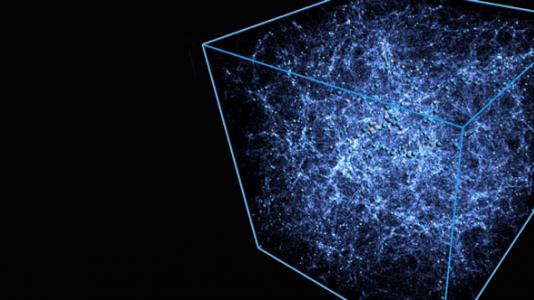Two Argonne-led projects among $39.8 million in first-round Exascale Computing Project awards

The U.S. Department of Energy’s (DOE’s) Exascale Computing Project (ECP) today announced its first round of funding with the selection of 15 application development proposals for full funding and seven proposals for seed funding, representing teams from 45 research and academic organizations.
Exascale refers to high-performance computing systems capable of at least a billion billion calculations per second, or a factor of 50 to 100 times faster than the nation’s most powerful supercomputers in use today.
The 15 awards being announced total $39.8 million, targeting advanced modeling and simulation solutions to specific challenges supporting key DOE missions in science, clean energy and national security, as well as collaborations such as the Precision Medicine Initiative with the National Institutes of Health’s National Cancer Institute.
Of the proposals announced that are receiving full funding, two are being led by principal investigators at the DOE’s Argonne National Laboratory:
- Computing the Sky at Extreme Scales equips cosmologists with the ability to design foundational simulations to create “virtual universes” on demand at the extreme fidelities demanded by future multi-wavelength sky surveys. The new discoveries that will emerge from the combination of sky surveys and advanced simulation provided by the ECP will shed more light on three key ingredients of our universe: dark energy, dark matter and inflation. All three of these concepts reach beyond the known boundaries of the Standard Model of particle physics.
Salman Habib, Principal Investigator, Argonne National Laboratory, with Los Alamos National Laboratory and Lawrence Berkeley National Laboratory. - Exascale Deep Learning and Simulation Enabled Precision Medicine for Cancer focuses on building a scalable deep neural network code called the CANcer Distributed Learning Environment (CANDLE) that addresses three top challenges of the National Cancer Institute: understanding the molecular basis of key protein interactions, developing predictive models for drug response and automating the analysis and extraction of information from millions of cancer patient records to determine optimal cancer treatment strategies.
Rick Stevens, Principal Investigator, Argonne National Laboratory, with Los Alamos National Laboratory, Lawrence Livermore National Laboratory, Oak Ridge National Laboratory and the National Cancer Institute.
Additionally, a third project led by Argonne will be receiving seed funding:
- Multiscale Coupled Urban Systems will create an integrated modeling framework comprising data curation, analytics, modeling and simulation components that will equip city designers, planners and managers to scientifically develop and evaluate solutions to issues that affect cities now and in the future. The framework will focus first on integrating urban atmosphere and infrastructure heat exchange and air flow; building energy demand at district or city-scale, generation and use; urban dynamics and socioeconomic models; population mobility and transportation; and hooks to expand to include energy systems (biofuels, electricity and natural gas) and water resources.
Charlie Catlett, Principal Investigator, Argonne National Laboratory, with Lawrence Berkeley National Laboratory, National Renewable Energy Laboratory, Oak Ridge National Laboratory and Pacific Northwest National Laboratory.
The application efforts will help guide DOE’s development of a U.S. exascale ecosystem as part of President Obama’s National Strategic Computing Initiative. DOE, the U.S. Department of Defense and the National Science Foundation have been designated as lead agencies, and ECP is the primary DOE contribution to the initiative.
The ECP’s multiyear mission is to maximize the benefits of high-performance computing for U.S. economic competitiveness, national security and scientific discovery. In addition to applications, the DOE project addresses hardware, software, platforms and workforce development needs critical to the effective development and deployment of future exascale systems.
Leadership of the ECP comes from six DOE national laboratories: the Office of Science’s Oak Ridge, Argonne and Lawrence Berkeley national labs and the National Nuclear Security Administration’s (NNSA’s) Lawrence Livermore, Los Alamos and Sandia national labs.
The Exascale Computing Project is a collaborative effort of two DOE organizations — the Office of Science and the NNSA. As part of President Obama’s National Strategic Computing initiative, ECP was established to develop a capable exascale ecosystem, encompassing applications, system software, hardware technologies and architectures, and workforce development to meet the scientific and national security mission needs of DOE in the mid-2020s timeframe.
Established by Congress in 2000, NNSA is a semi-autonomous agency within DOE responsible for enhancing national security through the military application of nuclear science. NNSA maintains and enhances the safety, security, and effectiveness of the U.S. nuclear weapons stockpile without nuclear explosive testing; works to reduce the global danger from weapons of mass destruction; provides the U.S. Navy with safe and effective nuclear propulsion; and responds to nuclear and radiological emergencies in the United States and abroad.
Argonne National Laboratory seeks solutions to pressing national problems in science and technology. The nation’s first national laboratory, Argonne conducts leading-edge basic and applied scientific research in virtually every scientific discipline. Argonne researchers work closely with researchers from hundreds of companies, universities, and federal, state and municipal agencies to help them solve their specific problems, advance America’s scientific leadership and prepare the nation for a better future. With employees from more than 60 nations, Argonne is managed by UChicago Argonne, LLC for the U.S. Department of Energy’s Office of Science.
The U.S. Department of Energy’s Office of Science is the single largest supporter of basic research in the physical sciences in the United States and is working to address some of the most pressing challenges of our time. For more information, visit the Office of Science website.